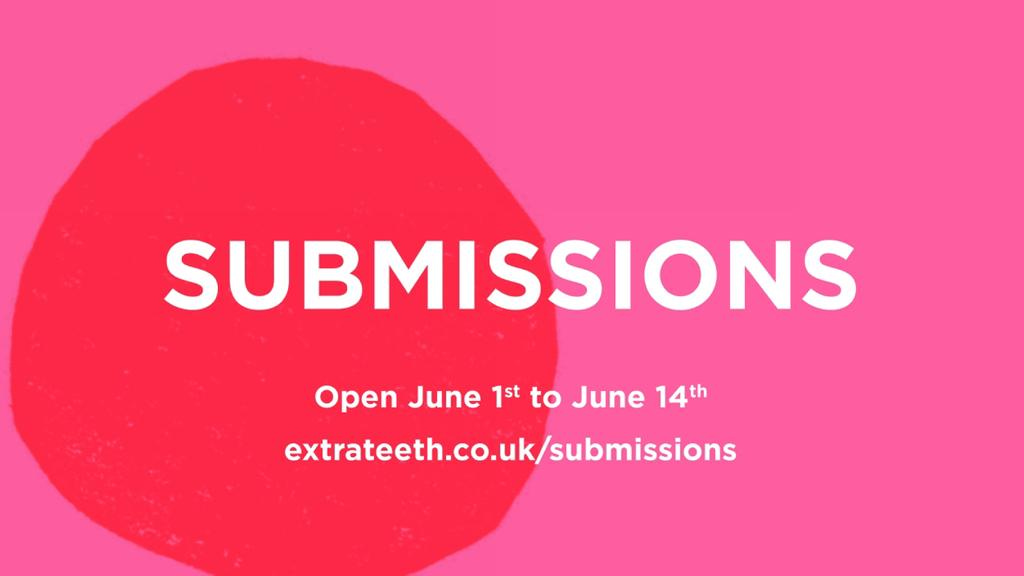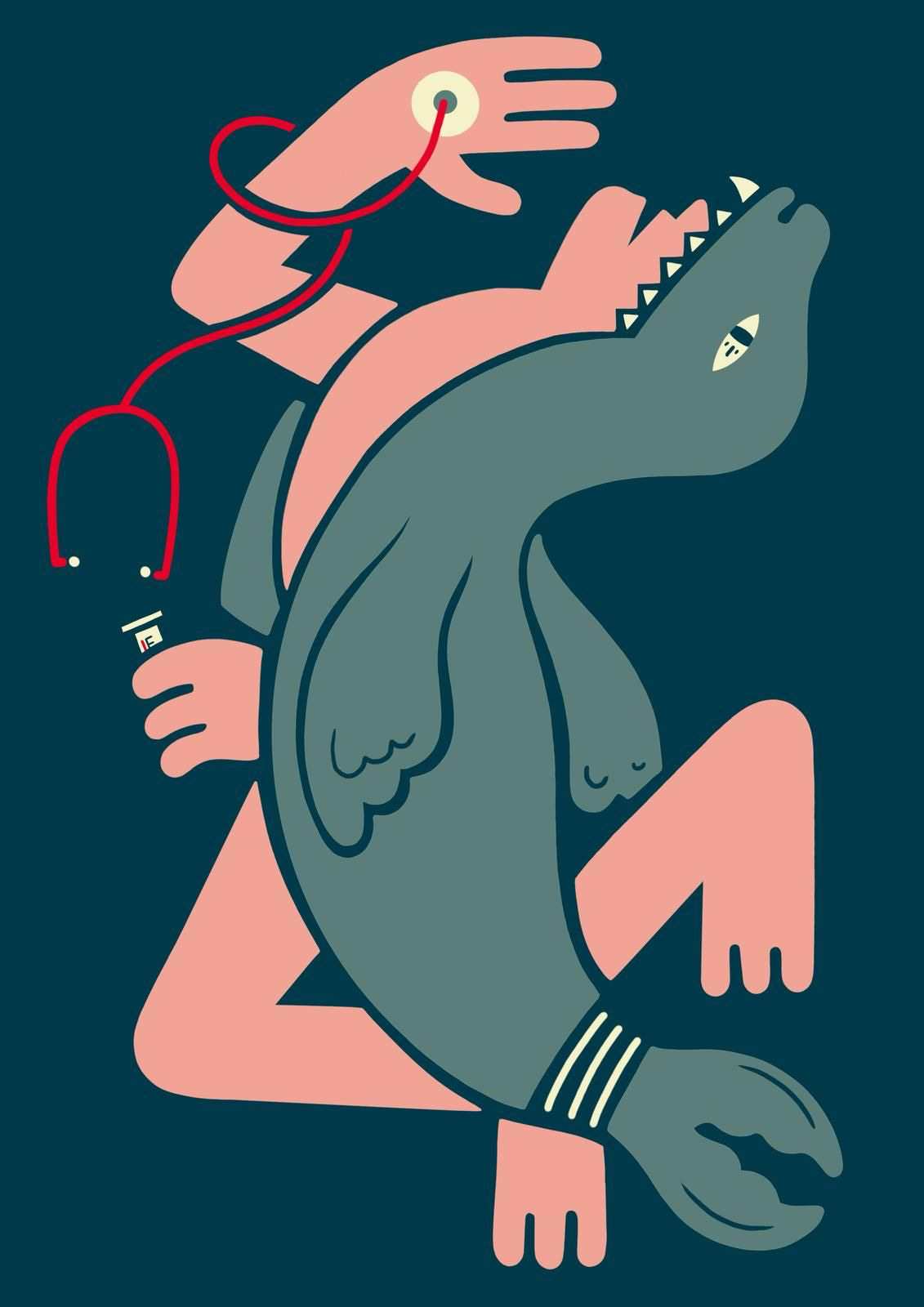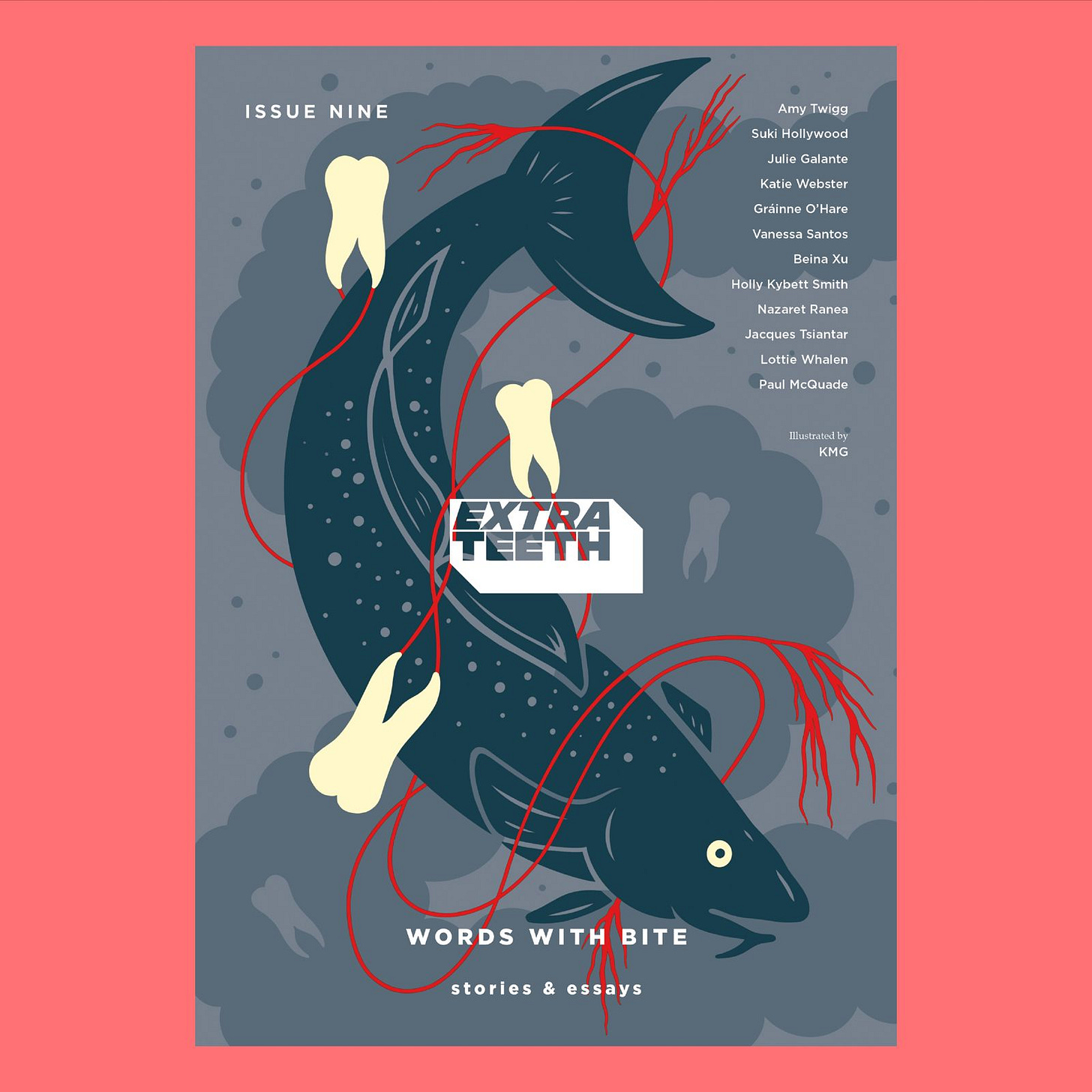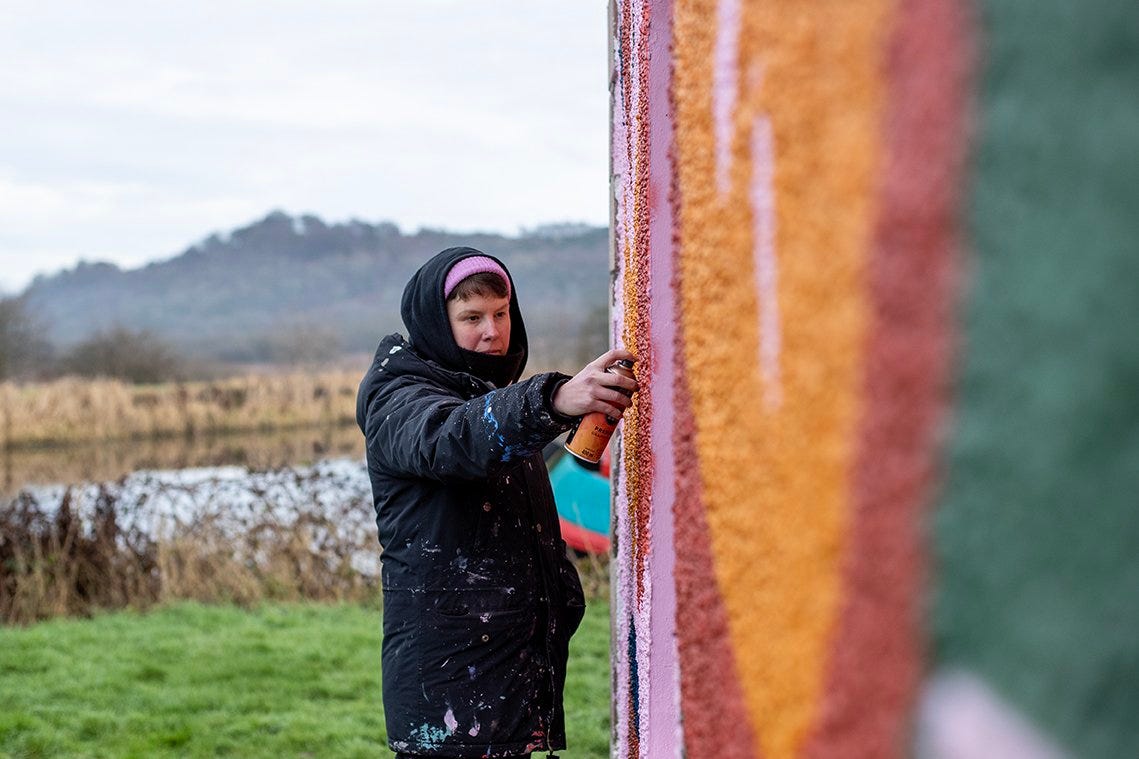Our submissions call is open until midnight on June 14th - so don’t forget to check our submissions page and get your work in! We are also offering two six-month mentorships with our brilliant fiction editors Cal Bannerman and Anna Walsh. Find all the info on our submissions page:
Now that Issue Nine is in the hands of our subscribers and readers near and far, we’ve loved hearing your responses to this issue’s artwork - and we thought it was time to introduce you to the brain behind the graphics!
For each issue of Extra Teeth, we hand the visual reins over to a new guest artist, who responds to the pieces we’ve chosen and puts together a colour palette with the help of our designer extraordinaire, Esther Clayton. They then go away and put together a visual tone for the issue, providing a combination of spot illustrations, full page pieces and a little tooth for the spine (cue everyone running to their collection to check the spines…. yes, they’re there!). Esther brings the whole thing together with typesetting and layout, and the magic happens at the printers when we get to see these stories and essays alongside original artwork.
We commissioned KMG for Issue Nine as we fell in love with her bold graphic style from seeing it around Edinburgh; we were thrilled when she responded with great enthusiasm and agreed to illustrate our comeback issue.
We fired a few questions through to KMG to get her take on how the issue came together.
You’ve taken the visual reins for Issue Nine and we’re so stoked about it. Could you tell us a little bit about how you approached this commission?
So this was my first experience working in direct response to written work, which I really enjoyed. I read each piece and made lists of my immediate responses to different themes or particular words that stood out. From there I sketched out a few ideas and then the most important part for me was figuring out the best colour palettes. I like to work minimally with colours so striking a balance whilst learning more about the spot colour printing process was definitely the most important learning curve for me.
What forms do you usually work in, away from the pages of Extra Teeth? What’s your preferred medium?
Normally I’m found using spray paint on a wall somewhere. I’m very much an analogue artist in the sense that I like to figure things out through sketching, paint and collaging. Making mistakes is an important part of my developmental process, so after working with my hands I bring my developed ideas on to a digital platform which can be a bit more laborious in regards to time - but I enjoy and value the importance of the creative process in an increasingly digital world that can often limit the journey of making happy accidents.
Can you tell our readers how you got started as an artist and what your journey has been like?
Apparently I announced when I was two that I wanted to be an artist and I think since that point I’ve never really focused on or believed in anything else. I studied fine art, painting, at Gray’s School of Art in Aberdeen and then, while my other pals focused on climbing the career ladder, I decided to get a job in a skate shop so that I could have fun at work but also have time to focus on art outwith those working hours. I started exploring street art and graffiti when I was around 16, which slowly began to shape my creative curiosity, ethos and responses.
From there I gained more experience painting large scale murals by volunteering and working as an artist assistant for other mural artists. I then used this experience to expand on my own skill set and creative development, which led to me working full time as an artist around 10 years ago. As a somebody who really struggled through school and higher education with dyslexia and ADHD, the journey definitely hasn’t been the easiest or traditionally linear - but putting painting at the forefront of my focus remains the driving force as it’s simply something I love and enjoy to do.
One of the most exciting parts of putting the magazine together is when we send our final line up to our illustrators and then wait to see how they have responded to each piece. Have you ever worked in this way before, responding to fiction and essays?
No, this was my first experience of working in this way - which was fun but definitely a bit nerve-wracking! Because I think quite visually, whether I’m making art or even just reading a book, I assume other people also respond with their own creative visual imaginations. So there was definitely a bit of ‘what if this doesn’t line up with what the authors imagined?’ knocking about in the back of the mind when creating work that’s this specific. However, I did enjoy this new way of working and how it made me have to think and approach the job from a different perspective. It also required a collaborative way of thinking, as I wanted the art to speak for the authors as well as my own creative style.
Was there a piece from this issue that stood out to you, in particular, or one that stayed with you?
They were all cracking pieces, to be honest. But I really enjoyed ‘Ae Well Done You’, by Katie Webster, as I enjoyed the dialect and medical settings. My mum grew up in Orkney and worked as a nurse and when I was wee I would spend a lot of time on hospital wards observing the nurses and patients - so it struck a chord of nostalgia in it’s language and setting. That allowed me to have a more imagined response which I really enjoyed. I also really enjoyed ‘The Swallows’ by Nazaret Ranea as I have my own connections towards birds with life, grief and mortality so this piece also resonated with me.
We’ve chosen your illustration for Amy Twigg’s ‘Toothfish’ for the cover because we loved how striking it was, how fluid and bold. Which was your favourite illustration from this issue and why?
I really enjoyed working on ‘Toothfish’ as it just seemed the perfect fit for Extra Teeth for obvious reasons. I actually really like the simplicity of ‘The Swallows’ as I’m a big believer that less is often more.
What can your fans (including us!) expect next?
I’m actually in the early stages of working on my first book which will explore the connections of cultural heritage and oral storytelling through a series of community engagements, murals and street interventions - a journey inspired by my own family’s experiences and connections to the highland clearances and the stories that have shaped my own personal cultural identity. I’m excited about that as it’s a deeply personal project to me and I’ve been really enjoying learning more about the importance of oral storytelling throughout Scotland and Europe. Other than that I’ll be trying to find as many walls as I can to paint on and working on a couple of exciting commercial projects that I’m not allowed to talk about yet!
KMG is a Scottish based artist who has been creating work on the street for over two decades.
She was brought up steeped in the stories and tales of Northern Scotland. Inspired by the Celtic folklore stories that have shaped her own cultural identity, her work is created to celebrate, revive and reclaim the mythologies and history of oral story telling that are often overlooked and forgotten. Her work explores how marginalised communities have been impacted by different social agendas and the effect this has had on our cultural legacies, connections and landscapes.
KMG uses her work as a catalyst to provoke questions on how these stories and myths translate to modern society, and the ways in which they are connected to our cultural identity and contemporary environments.
Community engagement is also an integral element of her practise. She develops bespoke workshop programmes, created to engage with people across the lifespan, with the aim of informing and inspiring local communities to explore oral storytelling in their area. Through visual representation and art, people are enabled to create a visual identity of their own unique culture and heritage.








